Marching for Science in Washington, D.C.
Bill Dennison ·It was a cold and rainy day on Earth Day, April 22, when a contingent of Integration and Application Network (IAN) scientists headed to Washington, D.C. to join the March for Science. The rain couldn't dampen our spirits, as it was heartening to see so many people committed to supporting science. The highlight of the day for me was the camaraderie of the people we encountered throughout the day. Even the Capitol Police were very friendly and helpful. I did not observe a single incident of bad behavior all day. And the clever, funny and heartfelt signs provided an icebreaker, as people (including me) would comment on other people's signs, and often ask to take photos. Suzi Spitzer and Drew Webster in our group had very clever and artistic signs, so they were often stopped for photos.
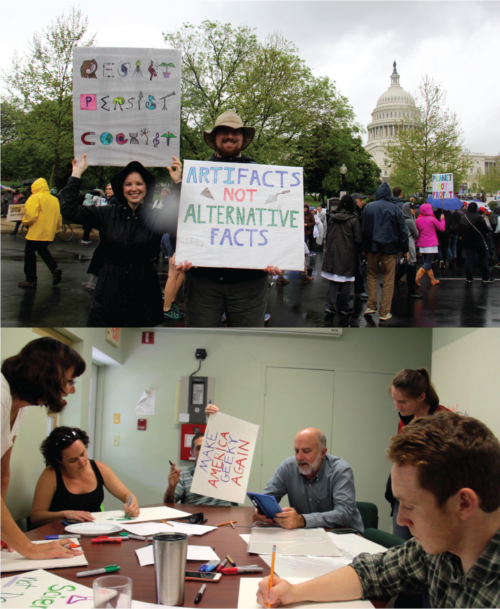
The University of Maryland Center for Environmental Science (UMCES) was well represented at the March for Science. Faculty, staff and students participated and we ran into several colleagues throughout the day. Eric Davidson, Director of the Appalachian Laboratory, is the President of the American Geophysical Union and was a speaker at the event. In addition, Carrie Solomon, a Professor at Gallaudet University, received her PhD from the Marine Environmental and Estuarine Science program and she also spoke at the event.

We stopped in the office of the American Association for the Advancement of Science (AAAS) on our way to the start of the March. They had great T-shirts, magnets, water bottles and other paraphernalia. Following the March, AAAS screened the world premiere of the new HBO movie 'The Immortal Life of Henrietta Lacks', starring Oprah Winfrey.

We marched from the Washington Monument along Constitution Avenue all the way to the steps of the U.S. Capitol. The crowds were so thick that we crept along slowly. It was difficult to keep track of each other from our group, complicated by the sea of signs and umbrellas obscuring our vision. Almost everyone was wearing a hat, rain jacket or poncho, which also served to obscure the identification of people.
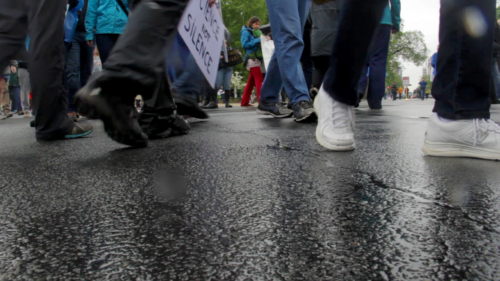
What was unique about the March for Science was the participation by people who do not normally get involved in public demonstrations. I saw every age group at the March for Science, and was surprised to see some fairly elderly people participating. In our IAN group, we had people in their twenties, thirties, forties, fifties and sixties. If you count in Don Boesch, UMCES President, who also participated, we had a person in their seventies as well. The last time I marched for anything was in my teens when the Vietnam War was being protested, and those demonstrations were exclusively teens and twenty somethings. The outpouring of support for science was truly multigenerational.
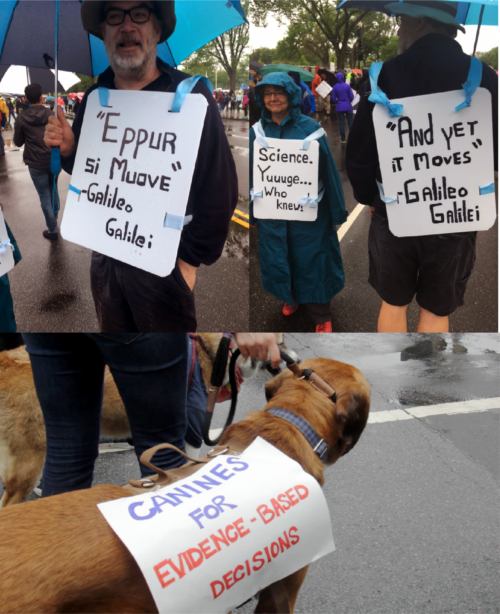
What I liked about the March for Science was the preposition 'for'. This was not a demonstration against a person or a policy, but a demonstration FOR something, and the 'something', science, is certainly worth celebrating. Many of the signs emphasized the value science has in our lives. Other signs emphasized the scientific process, supported by facts and peer review. A common theme was the importance of science in climate change research. There were some political signs, but they were a minority.
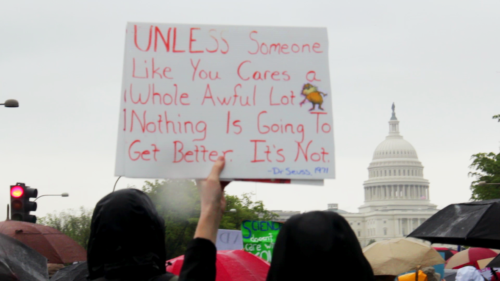
There were many entrepreneurs in Washington D.C. People were selling T shirts, hats, buttons, and stickers. Umbrellas and ponchos were for sale as well. The food trucks were doing a brisk business. We stopped into the lobby of Hotel Washington to dry out and have a drink, and they were doing a rousing trade.
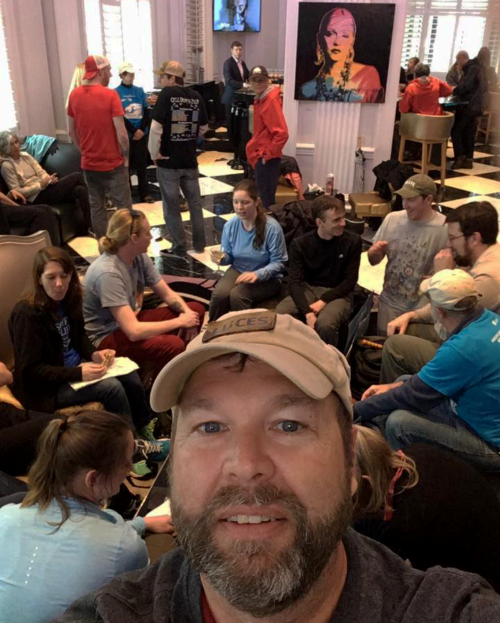
In spite of getting thoroughly soaked and cold, I am very glad to have participated in the March for Science. The shared experience of so many people promoting the acquisition of knowledge for the good of humanity was inspiring. I hope that this demonstration of the value of science will be incorporated into the consciousness of people beyond this Earth Day event. Knowing that many people care about what happens to the funding of science may help our elected leaders realize that it should not be neglected. In many ways, the future of our existence on Planet Earth (some signs said "There is no planet B") relies on increasing our collective understanding of the processes that affect our health and our environment.

About the author
Bill Dennison

Dr. Bill Dennison is a Professor of Marine Science and Vice President for Science Application at the University of Maryland Center for Environmental Science.

